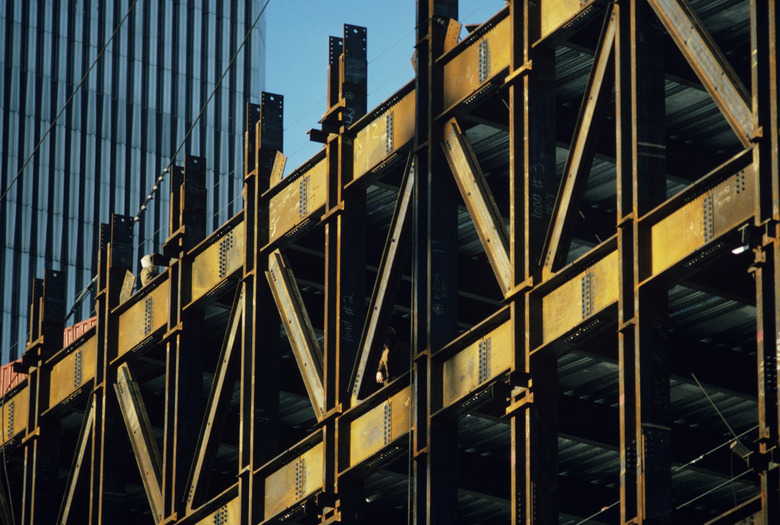The Disadvantages Of Steel Structures
Steel is one of the most abundantly used structural materials, owing to its strength, scrap value and ease of transport. It is used for pipes (water, compressed air and gas distribution), utility lines, fuel distribution structures, sewage systems, pontoon structures, and a host of accessories such as chocks, cleats, bollards, hangers, expansion joints and anchors. Steel structures are susceptible to various environmental and other risks which severely compromise their structural integrity, safety and longevity.
Corrosion
Corrosion
Steel is susceptible to corrosion in outdoor atmospheres. Corrosion is the destruction of a metal due to its reaction with atmospheric oxygen. This electrochemical oxidation produces metal oxide, or rust. Steel structures need to be adequately protected by the application of an appropriate barrier between the metal element and the atmosphere. Surface preparations ensure the protection and prolong the serviceable life of a steel structure. Some common types of steel surface preparation methods include dry abrasive blasting, water blasting, coal tar coatings, paint and substituting steel with corrosion-resistant alloys, such as:
- titanium alloys
- nickel alloys
- aluminum alloys
- stainless steel
These, and other corrosion-protecting methods are typically expensive and are restricted by practical limitations such as accessibility, location and time.
Fireproof Treatment
Fireproof Treatment
Steel structural elements require expensive fireproof treatment. Although steel elements, such as stand-alone structures, are incombustible, their strength reduces at high temperatures due to fire or when other materials within a building burn, making them susceptible to buckling. Furthermore, steel, being an excellent conductor of heat, ignites materials in contact and causes fires which rapidly spread to other sections of a building. Steel structures may require additional fireproofing, and buildings may need to be installed with appropriate sprinkler systems, as defined by building-code requirements of a particular locality. Fireproof coatings, such as expanded mineral coatings, concrete and intumescent materials, ensure that the temperature of steel does not exceed to ignition limits in the event of fire. Oftentimes, steel structures are enclosed in gypsum block, masonry block, gypsum board and clay tile enclosures that protect them from heat. These enclosures are typically expensive and require additional maintenance.
Fatigue and Fracture
Fatigue and Fracture
According to Jack C. McCormac in the book "Structural Steel Design," steel elements are susceptible to fatigue. Large variations in tensile strength expose steel elements to excessive tension, which reduces its overall strength. Steel is also susceptible to brittle fracture when it loses its ductility. This increases its chances of buckling, which is typically counterbalanced by adding expensive steel columns that stiffen the primary structure.
References
- "Structural Steel Design": Jack C. McCormac: 2008
- NASA: Structural Steel and Corrosion
- Government of Montana: Structural Steel Superstructures
Cite This Article
MLA
, Natasha Gilani. "The Disadvantages Of Steel Structures" sciencing.com, https://www.sciencing.com/disadvantages-steel-structures-6889311/. 13 March 2018.
APA
, Natasha Gilani. (2018, March 13). The Disadvantages Of Steel Structures. sciencing.com. Retrieved from https://www.sciencing.com/disadvantages-steel-structures-6889311/
Chicago
, Natasha Gilani. The Disadvantages Of Steel Structures last modified March 24, 2022. https://www.sciencing.com/disadvantages-steel-structures-6889311/
